Abstract
College students' presses on a telegraph key occasionally turned on a light in the presence of which button presses produced points later exchangeable for money. Initially, responding was maintained by low-rate contingencies superimposed on either random-interval or random-ratio schedules. Later, the low-rate contingencies were relaxed. Low-rate key pressing had been established for some students by shaping and for others by demonstration and written instructions. After the low-rate contingencies were relaxed, higher response rates generally did not increase point earnings with random-interval scheduling, but did so with random-ratio scheduling. In both cases, shaped responding usually increased, and instructed responding usually continued at an unchanged low rate. The insensitivity of instructed responding typically occurred despite contact with the contingencies. The differential sensitivity to schedule contingencies of shaped responding relative to instructed responding is consistent with the different properties of contingency-governed and rule-governed behavior and is not rate-dependent.
Keywords: instructions, rule-governed behavior, shaping, contingency sensitivity, DRL, random interval, random ratio, telegraph key, humans
Full text
PDF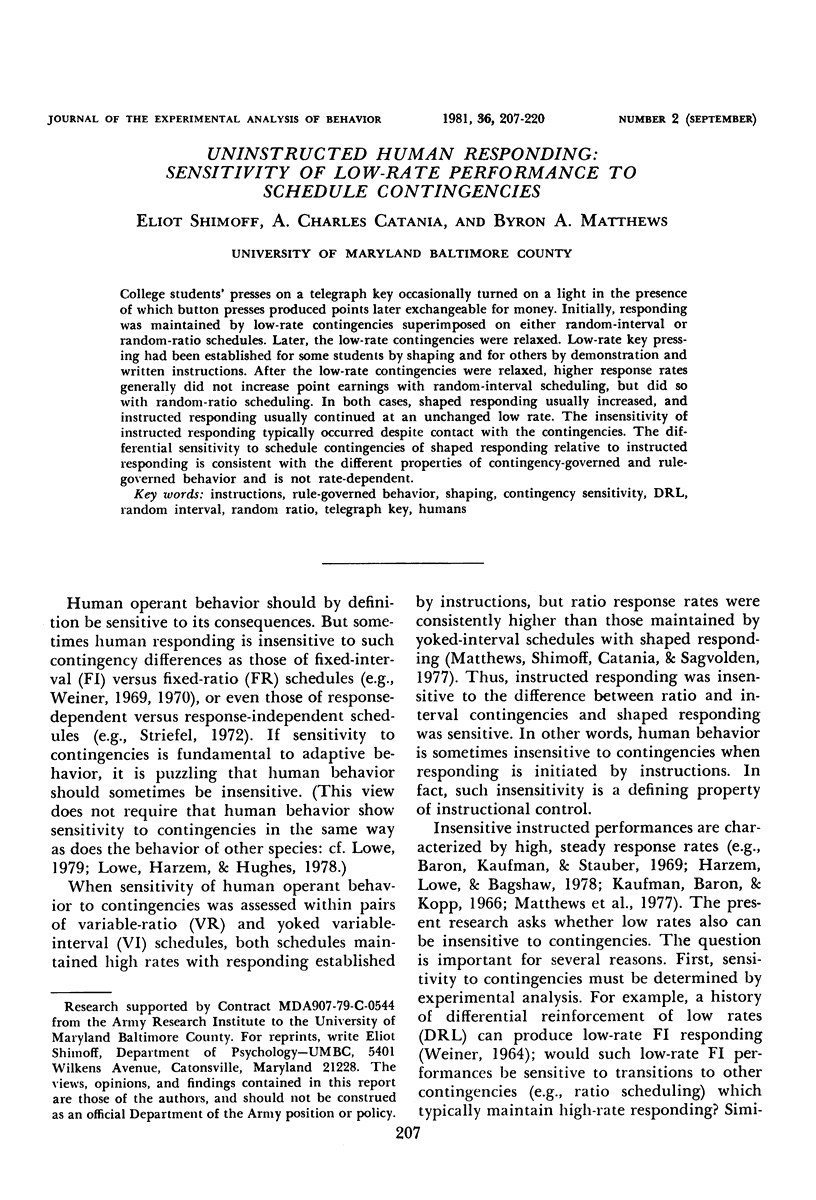

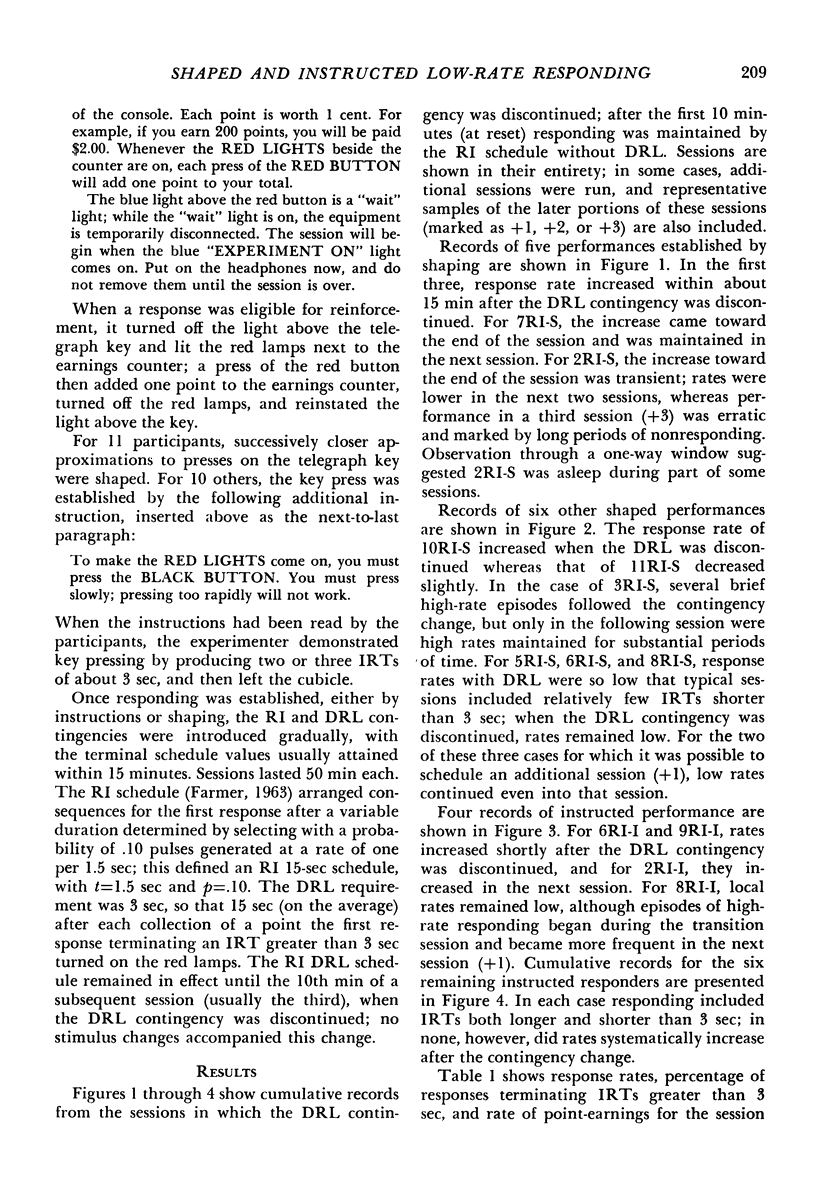

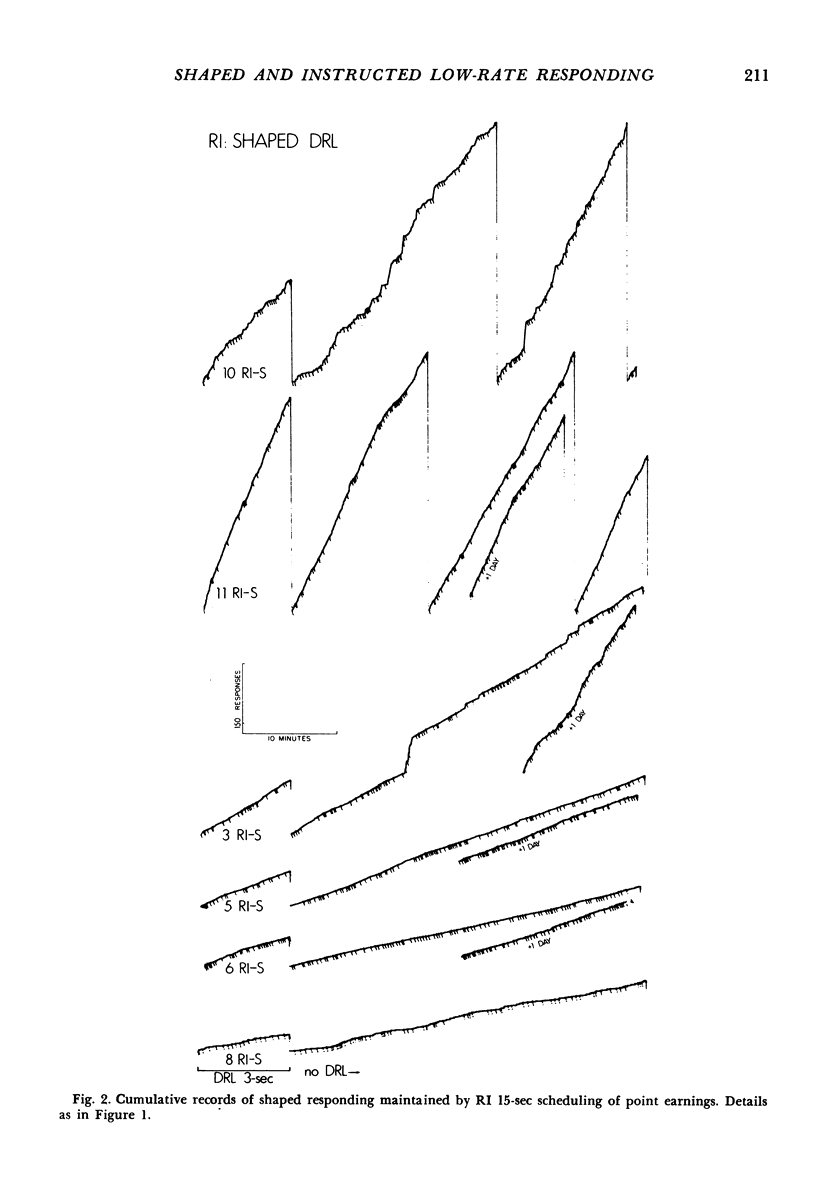
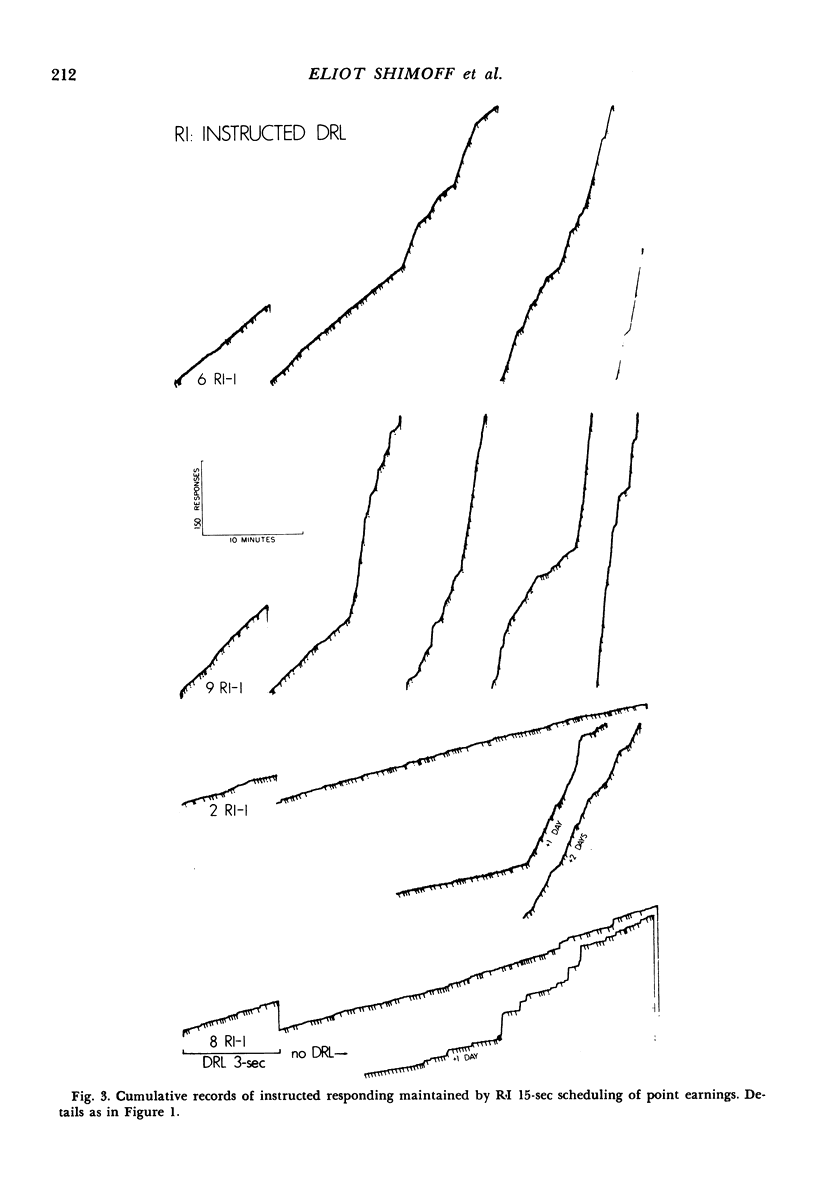





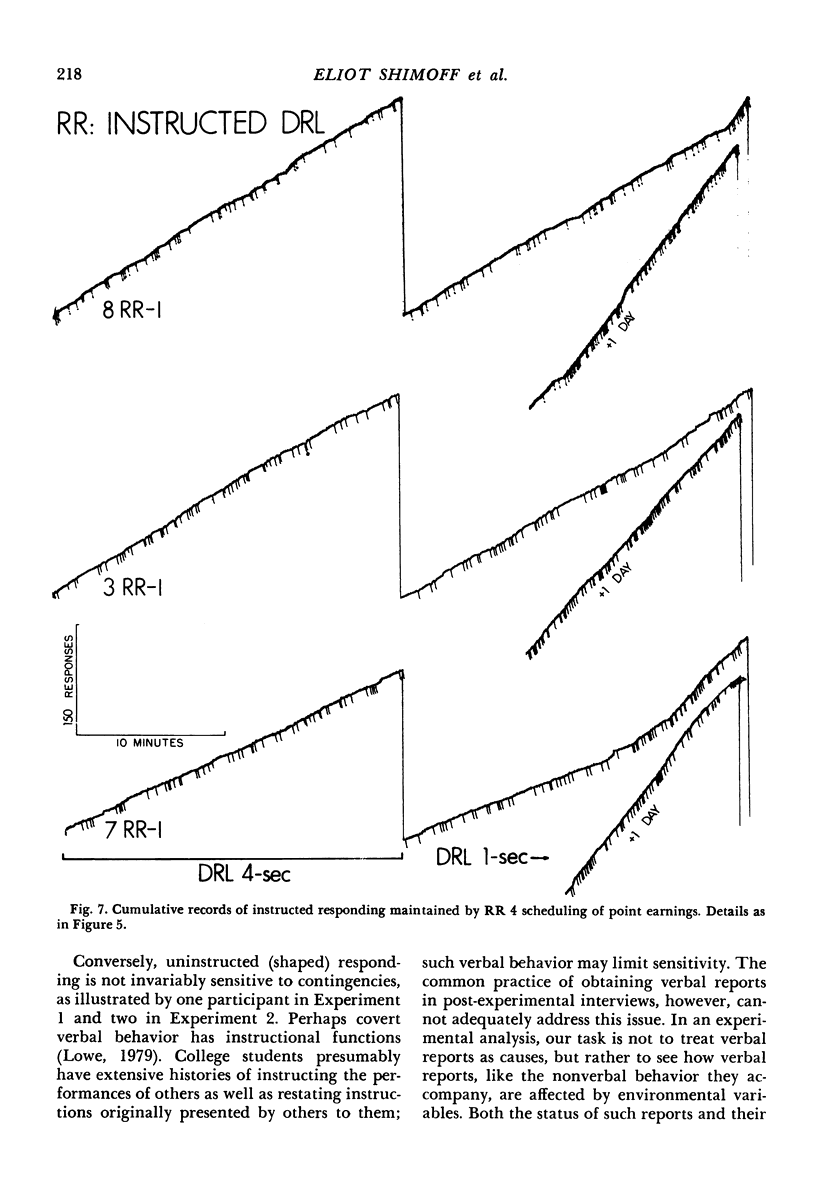
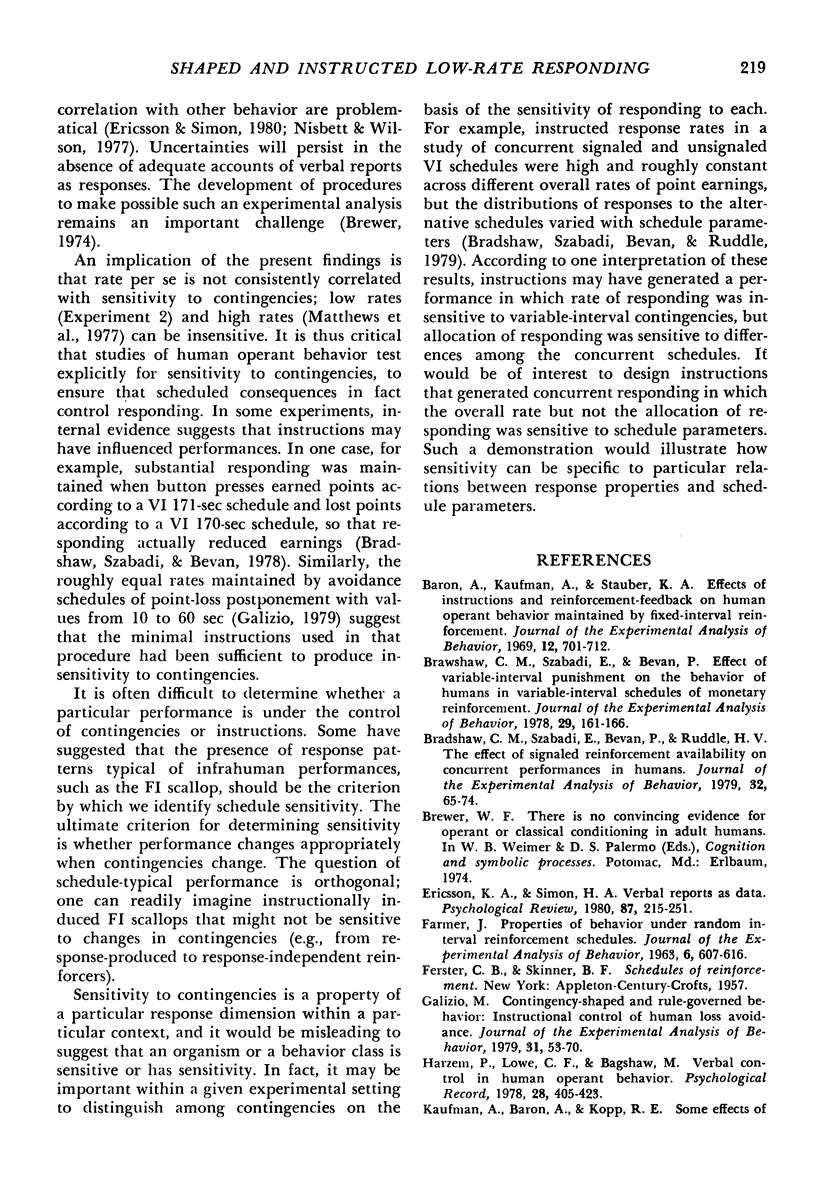

Selected References
These references are in PubMed. This may not be the complete list of references from this article.
- Baron A., Kaufman A., Stauber K. A. Effects of instructions and reinforcement-feedback on human operant behavior maintained by fixed-interval reinforcement. J Exp Anal Behav. 1969 Sep;12(5):701–712. doi: 10.1901/jeab.1969.12-701. [DOI] [PMC free article] [PubMed] [Google Scholar]
- Bradshaw C. M., Szabadi E., Bevan P. Effect of variable-interval punishment on the behavior of humans in variable-interval schedules of monetary reinforcement. J Exp Anal Behav. 1978 Mar;29(2):161–166. doi: 10.1901/jeab.1978.29-161. [DOI] [PMC free article] [PubMed] [Google Scholar]
- Bradshaw C. M., Szabadi E., Bevan P., Ruddle H. V. The effect of signaled reinforcement availability on concurrent performances in humans. J Exp Anal Behav. 1979 Jul;32(1):65–74. doi: 10.1901/jeab.1979.32-65. [DOI] [PMC free article] [PubMed] [Google Scholar]
- FARMER J. PROPERTIES OF BEHAVIOR UNDER RANDOM INTERVAL REINFORCEMENT SCHEDULES. J Exp Anal Behav. 1963 Oct;6:607–616. doi: 10.1901/jeab.1963.6-607. [DOI] [PMC free article] [PubMed] [Google Scholar]
- Galizio M. Contingency-shaped and rule-governed behavior: instructional control of human loss avoidance. J Exp Anal Behav. 1979 Jan;31(1):53–70. doi: 10.1901/jeab.1979.31-53. [DOI] [PMC free article] [PubMed] [Google Scholar]
- Lowe C. F., Harzem P., Hughes S. Determinats of operant behavior in humans: some differences from animals. Q J Exp Psychol. 1978 May;30(2):373–386. doi: 10.1080/14640747808400684. [DOI] [PubMed] [Google Scholar]
- Matthews B. A., Shimoff E., Catania A. C., Sagvolden T. Uninstructed human responding: sensitivity to ratio and interval contingencies. J Exp Anal Behav. 1977 May;27(3):453–467. doi: 10.1901/jeab.1977.27-453. [DOI] [PMC free article] [PubMed] [Google Scholar]
- Striefel S. Timeout and concurrent fixed-ratio schedules with human subjects. J Exp Anal Behav. 1972 Mar;17(2):213–219. doi: 10.1901/jeab.1972.17-213. [DOI] [PMC free article] [PubMed] [Google Scholar]
- WEINER H. CONDITIONING HISTORY AND HUMAN FIXED-INTERVAL PERFORMANCE. J Exp Anal Behav. 1964 Sep;7:383–385. doi: 10.1901/jeab.1964.7-383. [DOI] [PMC free article] [PubMed] [Google Scholar]
- Weiner H. Controlling human fixed-interval performance. J Exp Anal Behav. 1969 May;12(3):349–373. doi: 10.1901/jeab.1969.12-349. [DOI] [PMC free article] [PubMed] [Google Scholar]


